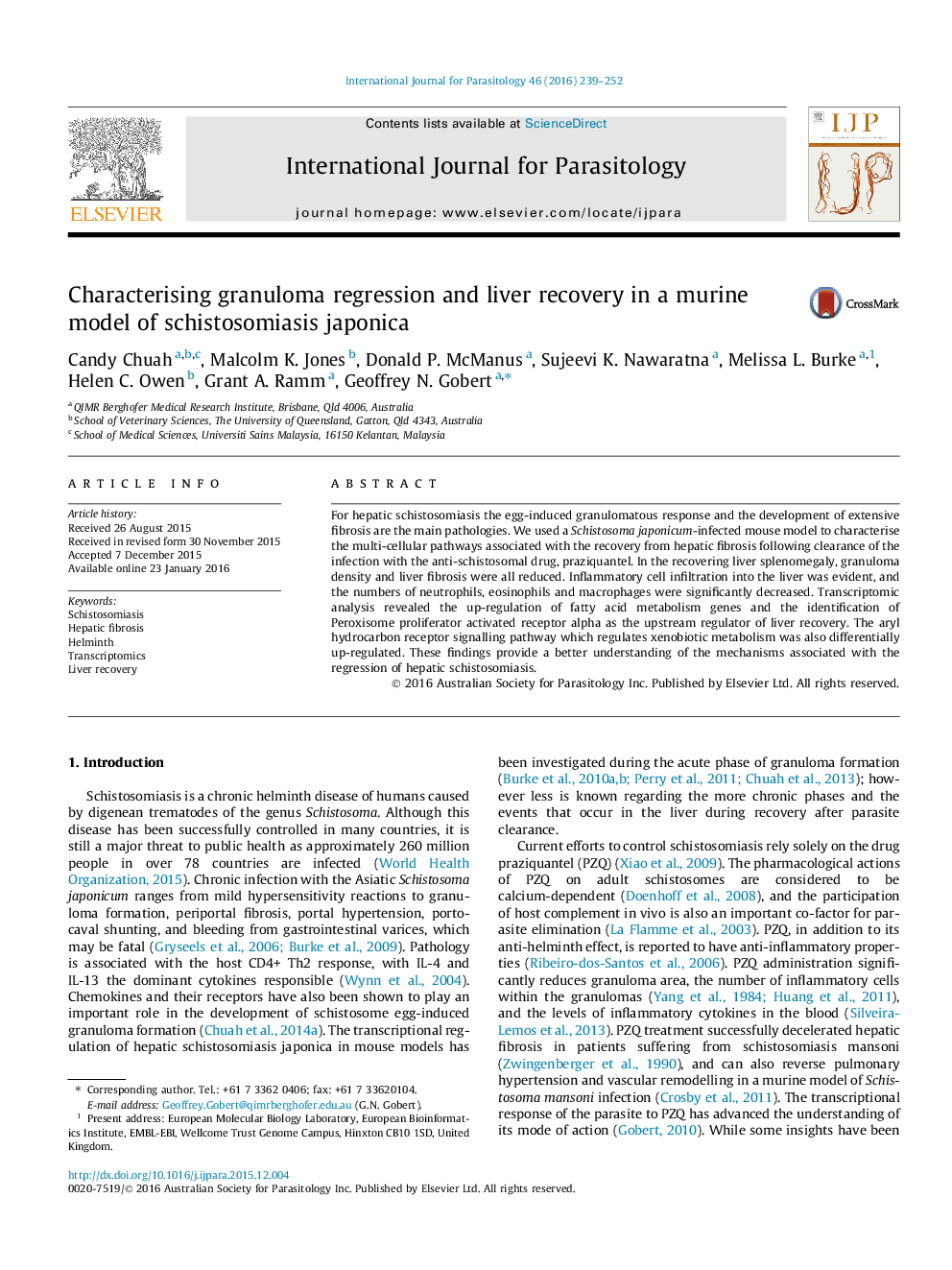| Article ID | Journal | Published Year | Pages | File Type |
|---|---|---|---|---|
| 2435953 | International Journal for Parasitology | 2016 | 14 Pages |
•Liver recovery after schistosomiasis involves both cellular and molecular components.•Immune cell influx towards the liver granuloma is active during infection.•PPAR-α is identified as a key mediator of the transcriptional events after cure.•The aryl hydrocarbon receptor signalling pathway is central to detoxification after cure.
For hepatic schistosomiasis the egg-induced granulomatous response and the development of extensive fibrosis are the main pathologies. We used a Schistosoma japonicum-infected mouse model to characterise the multi-cellular pathways associated with the recovery from hepatic fibrosis following clearance of the infection with the anti-schistosomal drug, praziquantel. In the recovering liver splenomegaly, granuloma density and liver fibrosis were all reduced. Inflammatory cell infiltration into the liver was evident, and the numbers of neutrophils, eosinophils and macrophages were significantly decreased. Transcriptomic analysis revealed the up-regulation of fatty acid metabolism genes and the identification of Peroxisome proliferator activated receptor alpha as the upstream regulator of liver recovery. The aryl hydrocarbon receptor signalling pathway which regulates xenobiotic metabolism was also differentially up-regulated. These findings provide a better understanding of the mechanisms associated with the regression of hepatic schistosomiasis.
Graphical abstractFigure optionsDownload full-size imageDownload high-quality image (321 K)Download as PowerPoint slide
